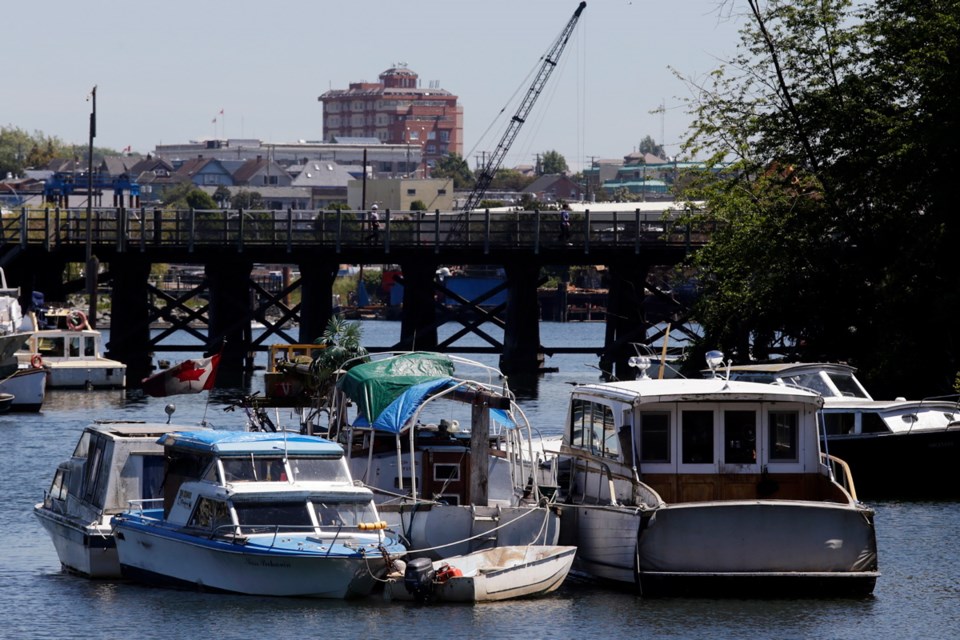Having received more than 100 complaints, Victoria councillors decided Thursday to dip their toes into the murky regulatory waters surrounding liveaboards and derelict boats anchored in the Gorge Waterway near the Selkirk Trestle.
After extensive debate, councillors asked staff to report back on potential management objectives for the waterway and to begin discussion with the federal government about what regulations may be possible.
For years, more than a dozen boats, some derelict, have been anchored just northwest of the Selkirk Trestle off the city’s Banfield Park.
They’ve long been a thorn in the side of local residents and other recreational water users, some of whom complain that many of the boats are in poor repair and are leaking fuel and oil. Also, with no facilities such as pump-out stations, the liveaboards dump raw sewage into the water.
Others complain of noise from the boat residents and say the boats are a nuisance.
Coun. Shellie Gudgeon said council can’t continue to ignore the situation, especially given successful efforts to restore the Gorge.
“If we are to be leaders in making this the most livable city, we currently are not doing that by turning our back and pretending this doesn’t exist in the Gorge Waterway,” Gudgeon said.
“This is where I want to take my children when I want to sit on the beach and enjoy the phenomenal recovery of that waterway and currently, I can’t.”
But getting control of the situation is not as simple as passing a bylaw. The seabed is owned by the province and managed by the Ministry of Lands, Forests and Natural Resource Operations. The water surface is considered a navigable waterway and is subject to federal navigation and marine habitat regulations.
The province would be willing to consider leasing the water lot to the city, provided the city develops a management plan consistent with the province’s community use and recreation objectives, said Rob Woodland, city director of regulatory and legislative services.
But the province has made it clear it will not approve a management plan that prohibits boaters from mooring in the area.
“In my discussions with the province, they have been unequivocal from their point of view that anything that would prohibit vessels from transiting or mooring in this area would not be something that would be included in a lease with the city,” Woodland said.
That would mean any management plan would have to involve moorage buoys and enforcement of regulations governing lengths of stay.
While Victoria’s harbour is designated by the federal government as a no-sewage-discharge zone, its enforcement mandate ends at the Selkirk Trestle, Woodland said.
Coun. Chris Coleman called the multi-jurisdictional situation and the lack of provincial action frustrating.
“I think the greatest frustration is we talk about who has jurisdiction and authority and, quite rightly, the adjacent neighbours just want it dealt with,” Coleman said.
Woodland said the problem is far from unique to Victoria.
“Coastal communities throughout the province in British Columbia have faced similar issues of varying severity,” Woodland said.
“Locally, the District of Oak Bay has numerous vessels at anchor — some of which are occupied, some of which simply moored for convenience purposes in Oak Bay and Cadboro Bay,” Woodland said.
“Sooke has faced costly issues related to the abandonment of derelict vessels in Sooke Harbour and that story is repeated up and down the coast.”



